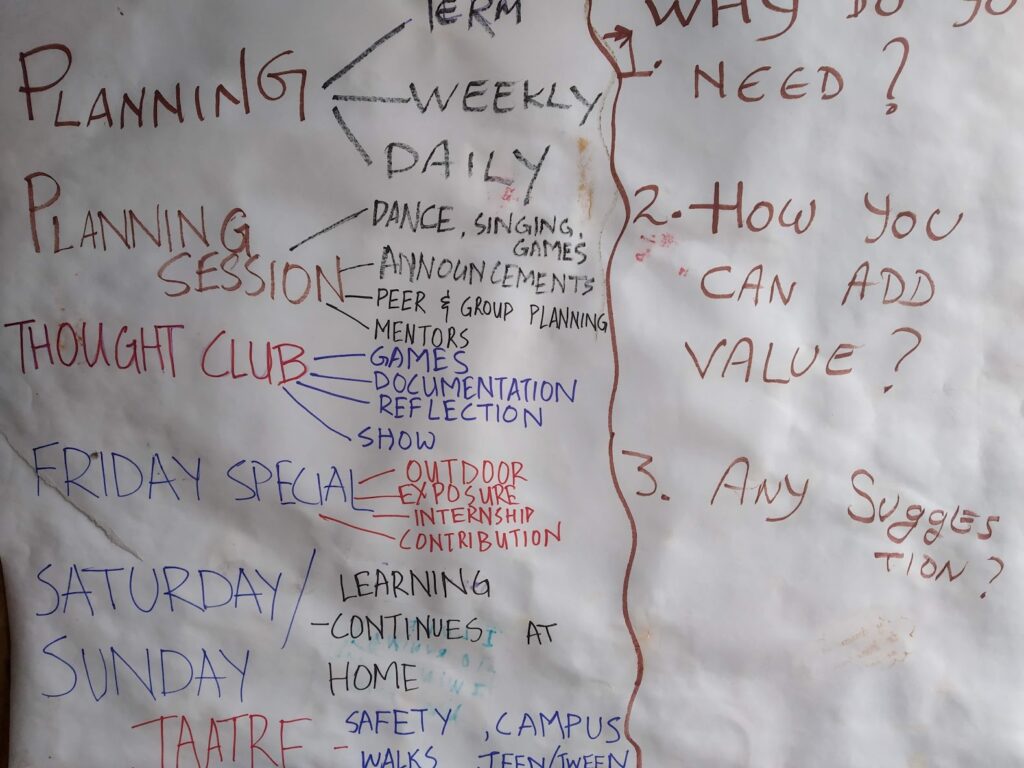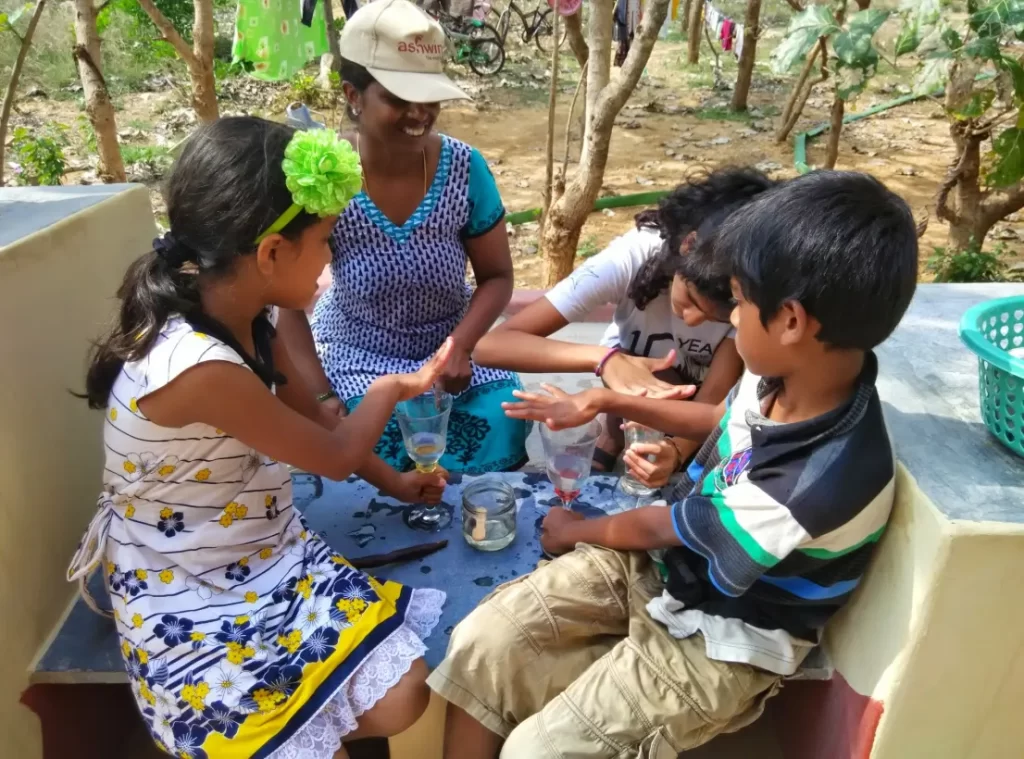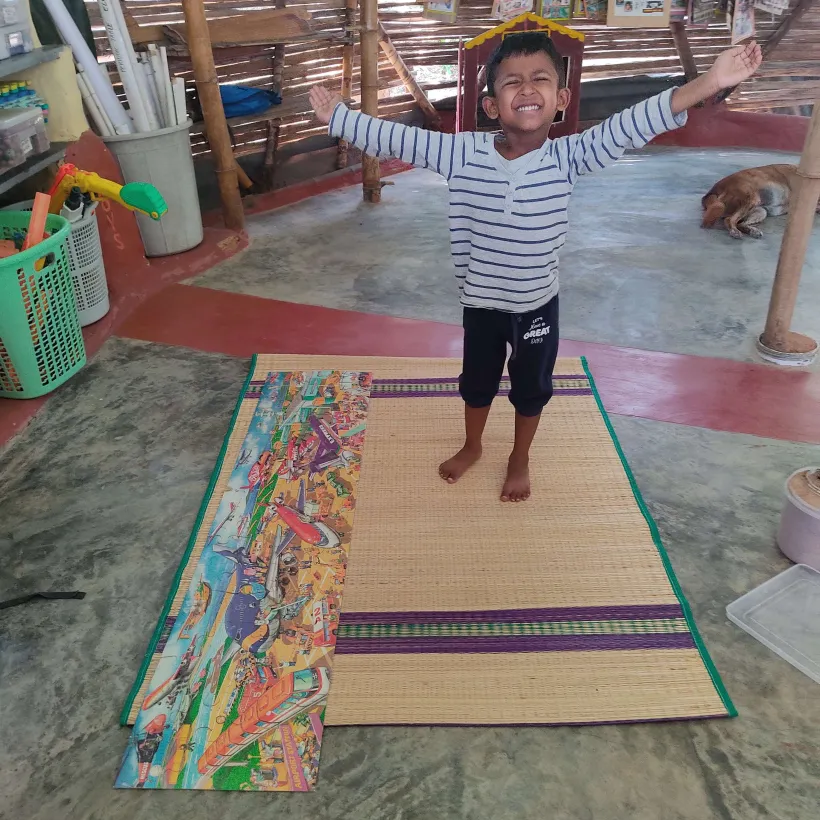Planning dread? We all go through various phases of planning. Open learning is easier if a broad plan is in place based on learning focus. Planning can be fun and need not be a chore.

Parent – “Please for god sake let’s make a daily/weekly plan”.
Child – “Umm, yeah, uh, but, not again…”.
And the cycle continues. Tired of the daily “planning fight” with your kids? Parents and children ride this roller coaster most of the day. Usually, the parents and children dread the planning phase. The discussion around planning ends up either in arguments or making a non-workable plan.
Why Plan, Anyway?
We all agree that broad planning is necessary to navigate the day/week. Planning help us to move in the right direction. It may or may not help to achieve the goals. Think of a road trip. You wouldn’t just get in the car and aimlessly drive. You would plan which cities to visit, what kind of clothing would be required, how to get there, and maybe even where to grab some snacks. Planning is all the more important, especially in an open learning or unschooling environment. The child is not a part of any formal institution hence the day may just pass by. A loose plan helps you navigate the week and keeps everyone (including you!) on track with learning goals. The important things to remember are – what is your family’s goal in open learning, second what does the child want to learn
What makes planning boring?
- Children may find it tedious to think about the whole day/week. They may not have clarity in their thoughts. Thinking about the long term may seem daunting.
- They may feel if we plan we have to abide by it and doing may feel herculean task
- They may not voice their opinion during planning.
- It may be a monotonous activity

Before we jump to the actual planning phase, collect following information
list your child and family’s learning goal.Involve the child in understanding what he/ she wants to learn, and gauge his curiosity area.You can also follow Aarohi’s CAT (Competency, Ability, Talent) – Life’s curriculum Competency – Basic skills needed to live life.Ability – inherent abilities we are either born with or develop. Talent and interests – Talent is passion, and interest is what keeps us ticking. You can also include Habits of Mind (HOM) and Multiple Intelligence (MI) in planning
Buckle up, let’s embrace the glorious chaos of planning. Following are some thoughts on making the planning phase interesting

1. Planning with Pizza
Imagine your week as a pizza! The crust is your child’s natural talent or interest (their “core skill”). Toppings represent things they want to learn to support that skill. Cheese is the glue that holds it all together, like basic life skills. Let your child be the pizza chef, picking “toppings” (learning activities) for their week!
2. Planning by democratic Votes
Turn planning into an election! Let a board/paper display various things the child wants to learn under CAT, a few HOMs, or anything the child is curious about. All family members, including the child, will vote on all the categories. The child will then pick the items with the most votes in each category for the week. Afterwards, you can work out the details of each category together with your child.
3.Planning with Constraints
Make planning interesting by adding constraints! This could involve things like:
- No calculator Mondays: Challenge your child to solve math problems without a calculator on the first day of the week.
- Video explanations only: Encourage your child to explain concepts solely through videos on a specific day.
- Time constraints: Set time limits for certain activities to encourage focus and efficiency.
- Color constraints: Limit the use of certain colors in projects or activities to spark creativity within boundaries.
- Eating/cooking constraints: Try themed meals or limit ingredients to encourage exploration within those limitations.
- Go outdoors!: Plan activities that take place entirely outside for a change of scenery and a focus on nature.
- Silence is golden: Have a “no writing/reading” day where communication is non-verbal, encouraging other forms of expression.
- Try using only weaknesses to complete certain tasks. For example, you could eat all your meals with your non-dominant hand.
- No verbal communication for few hours
There can be a long list of constraints. This can make planning challenging and fun at the same time.
4. Planning Bingo
Create a bingo board based on learning focus, strengths, and weaknesses. Include various activities based on different learning styles. Create different combinations of finishing the board. Finally, the board will be the master plan maker.

5. Planning by strengths/ weaknesses
Children can mention their weaknesses and strengths or what they felt was easy/difficult while doing something. Make a plan based on 3 strengths and 3 weaknesses. Let’s say a child has strong visual intelligence, good at communication but weak in presenting ideas. Let the child create something with his visual intelligence like a collage on some emotions, and let him explain the process and his thoughts in a video.
6. Planning with Treasure hunt
Hide the treasure of broad categories of activities. Create simple treasure hunt clues for the child to find the treasure of the plan. This activity can bring many aspects of learning alive like analytical thinking, observation, memory retention, etc.
The planning can be interesting. Children don’t hate planning but the monotonous ways of planning. Let the child plan the details of whatever categories he picks for the week. It might be our wish to see the planning executed. Children like all of us can achieve the goals sometimes and fail to achieve the goal some other times. It is important to understand that a consistent practice of planning helps us to stay aligned with our learning goals. Planning brings structure to an Open learning/homeschooling environment.
Let your child drive the planning. Let him mess up with it. Eventually, the child will find a way with planning and execution.
